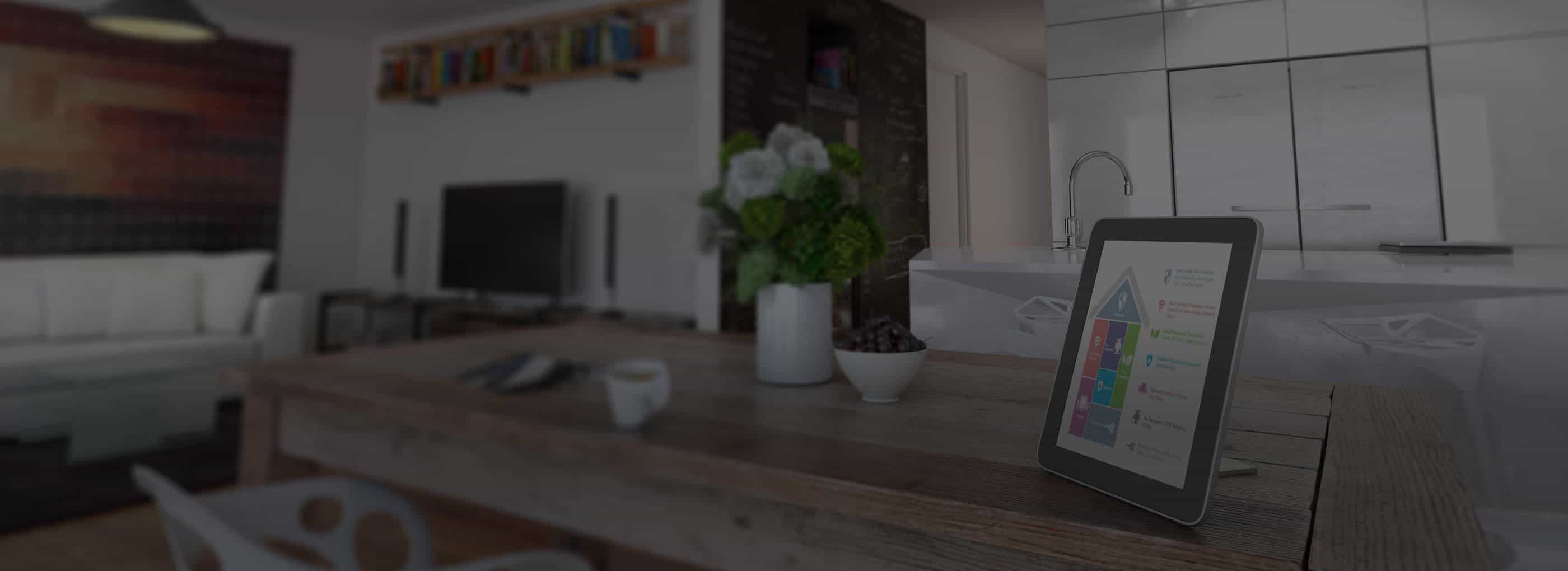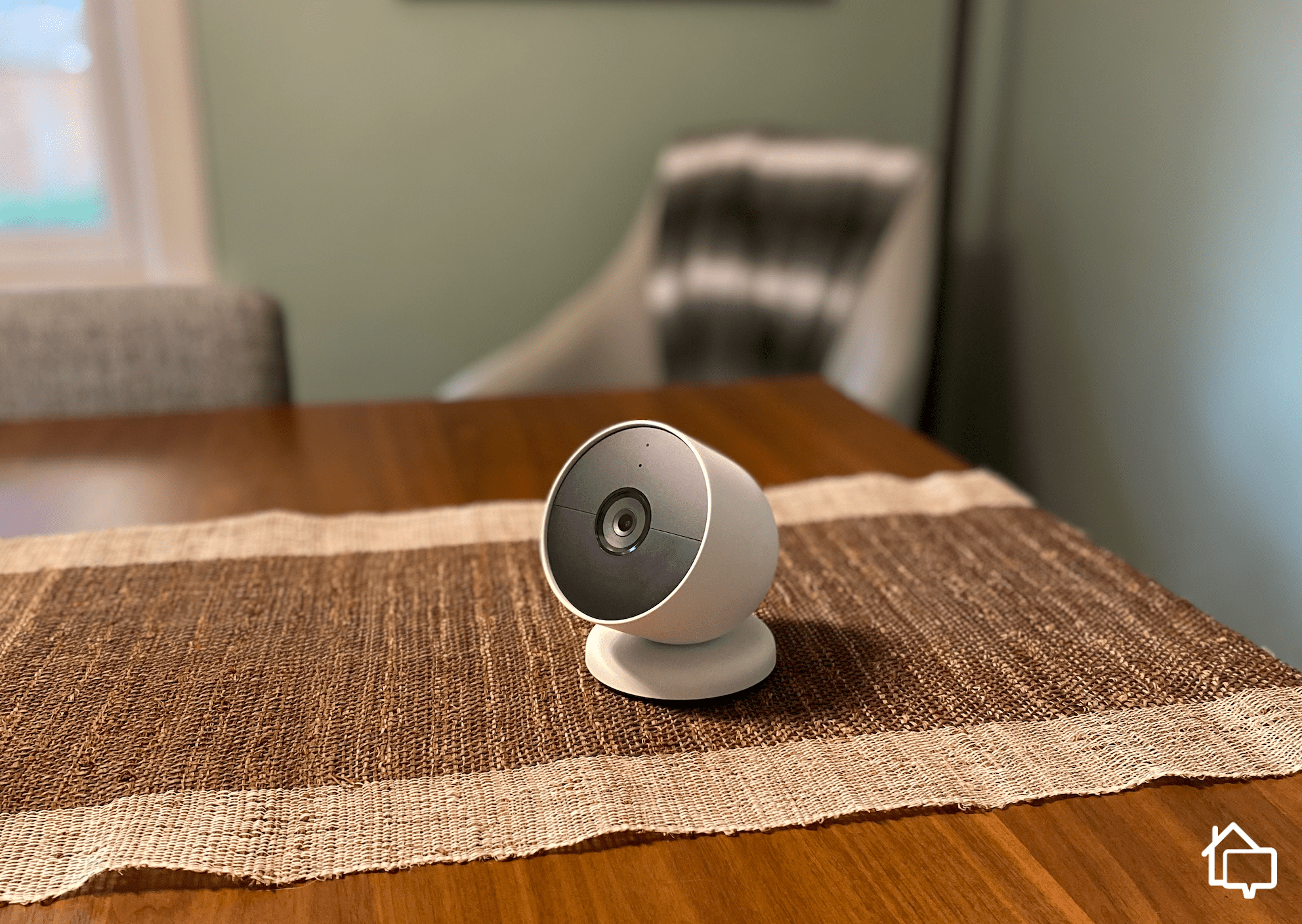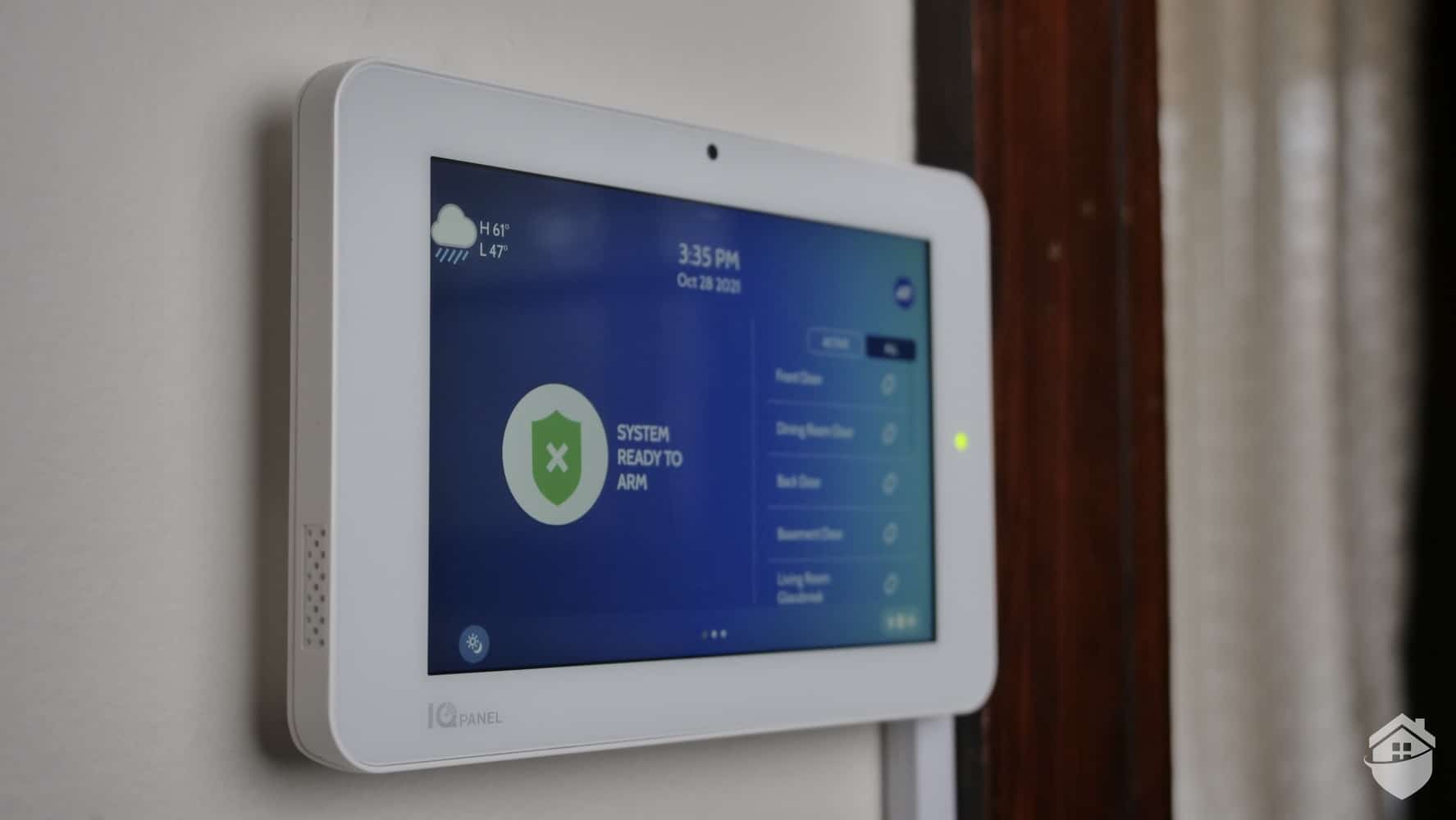A smart home that automates everyday tasks can save time and cut down on energy bills. (And, OK, a house that obeys your every command can also make you feel like Brad Pitt in his Malibu mansion.)
If you’ve gone with a Google Nest Hub for your smart home hub, you’ve made a wise choice. I’ve taken the new Hub Max out for a test spin and it delivers the goods. I’m not going to tell you there aren’t any issues (smart lights, ahem), but everything else I tested — Nest Cam, daily routines, video calling, Spotify, etc. — worked like a charm.
In this smart home automation guide, I’m going to show you how to connect your new Hub to your Google Home app, which will serve as your controller, so you can start saving on those electricity bills, streamlining your daily routines, and more.
>> Learn More: Google Nest Cam Review 2024
1. Getting Started With the Google Home App
Set Up Your Google Account
Ok, first things first. You’re going to need a Google account to make this work. I know, it’s kind of invasive. If you’re absolutely dead set on your anonymity, you could create a burner account. But, honestly, there’s a lot of neat stuff you can do once you personalize your hub, so you might want to bite the bullet on this one.
Download and Install the Google Home App
Next up: download the Google Home app onto your phone or tablet. The Home app is going to be your control center for managing all of your Google-connected equipment. If you’ve got an Android device, go to the Google Play Store to get your app. If you’ve got an iPhone, you’re still in luck. You can get a version of the Home app as long as you’re running iOS 15 or later.
That’s about it for preparing, though I do suggest you check a few more things under the hood before you fire up your Hub. Here are the biggies:
- Make sure the phone or tablet where you downloaded the Google Home app works with both 2.4 GHz and 5 GHz networks. Most newer devices do.
- Make sure you’ve given permissions to Google Assistant on your phone so that you can take advantage of voice-activated commands.
- Activate Bluetooth on your phone or tablet.
FYI: Enabling Bluetooth improves the connection between the Nest Hub and Google Home. It also lets Google Home discover nearby devices.
2. Powering Up Your Google Nest Hub
Now we’re ready to get started. The first step is simple enough, but I’m going to say it anyway because sometimes we get carried away with our new gadgets and forget the basics. Plug your Google Nest Hub into a power source! I’d put it somewhere you’d like it to stay because you’re not going to be moving your Hub around too much after it’s set up. The Hub should turn on automatically and play a few startup musical tones.
Pro Tip: If you’re inheriting your Hub or you’ve bought it off eBay, you’ll probably want to factory reset it. You never know what kind of software the previous owner may have installed. It’s pretty simple. Just press and hold both volume buttons on the back for 10 seconds. This works for both the 2nd Gen and the latest Max versions, by the way.
>> Check Out: Google Nest Doorbell Review
3. Connect Your Hub to the Google Home App
You’ve got both your devices up and running. Now it’s time to open the Google Home app on your phone or tablet and log in with your Google account if you haven’t already done so.
Google makes this really easy. Just tap the “+” icon in the top-left corner of the app to add a new device. Select “Set up a device” near the top of the list and choose “New devices.”
FYI: If you have multiple homes set up in Google Home, select the one where the Nest Hub will have access to your Wi-Fi. When I traveled to a vacation rental recently and brought along my Google Chromecast, Google Home suggested that I create a new home based on the rental’s Wi-Fi so that I didn’t associate my current home with a new network. Most folks will only set up one home.
Next, Google is going to ask you for a home nickname. “Home” works just fine, but if you want to call your pad “Thunderdome” or “The bat Cave,” do what feels good.
Your Hub is also going to ask for your address. This is mainly for getting the weather in your area and stuff like that, but if you don’t want Big Brother in your kitchen, that’s totally up to you. You don’t need to add your address if you don’t want to.
>> Read About: A 2024 Guide to Securing & Protecting Your Home
Once you’ve got your home connected, the Home app should search for your Nest Hub automatically. When it finds it, you’ll know because you’ll see your home’s nickname on the screen. Tap “Next” once you’ve connected. Depending on which Nest Hub you have, it may display a connection code or ask you to scan a QR code displayed on the Nest Hub’s screen.
Scan the code or confirm it, and your Nest Hub should connect automatically.
Did You Know? Google Home requires a “Home” setup in the app so that you can group devices. If this is the first device you’re adding, just click on “Get started,” then “Set up new devices.” You’ll be prompted to “Create another home.”
4. Personalize Your Nest Hub
Now for the fun part. Follow the on-screen prompts to configure your device settings. Of course, you’ll first have to sign off on an enormous terms of service agreement you probably won’t read. (We do, but that’s our job.) If you’d like to help improve user experience by sending usage statistics back to Google, that’s your call. For what it’s worth, this is the least invasive information you’ll be giving Google.
Locating Your Hub
Next, your Hub is going to try and figure out where in the house it is. If you’ve already set up your rooms in the Google Home app, you should see a list of them here.
One perk of the newer Google Nest Hub (2nd Gen) I should mention is a feature called “Sleep Sensing,” so if you’re taking advantage of that, make sure Google knows your device is in your bedroom. Otherwise, pick your kitchen or living room or whichever room you’d prefer.
FYI: Sleep Sensing is Google’s way of tracking your sleep data. The Nest Hub will listen to you while you sleep and note any disturbances, such as snoring or coughing. As it learns your patterns, it will offer you suggestions for better sleep.
Voice Matching
Google has gotten a lot better at recognizing voices in the last few years, and you can make your Hub go much further this way. You can ask Google Assistant to tell you what’s on your calendar in the morning, for example. Storing your voice also ensures your Hub responds to your commands specifically, and not to your 9-year-old daughter who wants to order a $99 pack of “Sonic” skins. Last but definitely not least, with the Google Hub you can use Google Meet Calling (formerly Duo) to video call other people.
>> Check Out: Keeping Kids Safe in the Digital Age
Note that older versions of Google’s smart speakers only allowed voice calling, but the Nest Hub and Max let you add video to those calls. Just know that the Nest Hub doesn’t have a camera, so the person you’re calling needs to have one.
All of these features have their own setup processes, so you may want to skip them for now. If you’ve got the time, go ahead and set them up.
Pro Tip: We suggest setting up Voice Match if you’re going to be the primary person responsible for the device. Voice Match will create a model of your voice and compare it to any voice that tries to make the Nest Hub do something. If they don’t match, the Hub will treat it as a guest query so that request options are limited.
>> Read About: Privacy and Technology Guide
5. Adding Features and Linking Services
Once you’ve connected your Google Nest Hub and personalized it a bit, the Home app will ask if you’d like to set up additional features, such as sleep tracking, hand gestures (to control the Nest Hub), a digital photo frame, music, TV, and calling friends and family with Google Meet. Plenty of good stuff. Some of these are selected by default, so make sure to uncheck any features you don’t want to be using.
>> Learn More: Best Home Security Systems That Work With Google Home
Typically, each setup involves connecting a third-party service or app to Google Home. For example, Google will ask you if you’d like to connect your Spotify account to Google Home so that anytime you want to listen to music, it selects your Spotify library, rather than YouTube Music, Pandora, or Apple Music. Just like with Voice Matching, you can add any of these additional features whenever you want, so there’s no rush.
6. Taking Your Google Nest Hub Further
Now that you’ve connected your Nest Hub to the Home app, you can take it for a test drive. Ask it to play some music by saying, “Hey Google, play some music.” You might not feel comfortable asking Google Assistant for things at first, but you’ll get used to it.
If you’ve set up hand gestures, test them out and see if they work. Access your Nest Hub through the Home app on your phone and see if you can control it from there. Likewise, make sure you check your Nest Hub for access to Google Home by swiping down on the touch screen.
You can also find a list of routines that can help you automate the devices and services connected to Google Home. You’ll find a handful of premade routines, and you can also customize your own. Look for the bedtime routine that triggers when you say “Good night.”
The Nest Hub will ask you what time you’d like your alarm set, tell you the weather forecast for the next day, and then lull you to sleep with sleep sounds while you get comfortable in bed (“Hey Google, anything but whale calls!”).
Try it out and see if you like it.
Routines make the Google smart home ecosystem more functional and seamless, especially when it comes to home security. Setting up a “Leaving for work” routine will put your Nest Hub into watchdog mode so that it listens for smoke alarms. This is a cool feature for sure, but also one that sits behind a paid subscription called “Nest Aware.”
Think you heard something outside? Check your Google Nest Doorbell or Outdoor Camera’s live feed from your Nest Hub and scan for interlopers. Could be someone trying to break in, or just your neighbor’s cat for the 16th time that day.
Google also offers a Nest x Yale Lock that connects to your Nest Hub. Yale earned the best touch screen smart lock in our review, so you may want to add one to your Google ecosystem.
>> Read More: The Best Smart Locks of 2024
Pro Tip: The Home app has several security and privacy features to protect your data. You can find these in the “Settings” area under “Privacy.” Here you’ll find information about your home activity, your data in Google Assistant, and how Google uses your data with “Data lending.” Keep in mind that your Hub will only listen and record you when it hears “Hey Google.” But be sure to take a look at each option so that you know where your data goes.
Troubleshooting
Google has a reputation for seamless, straightforward setups, but things can always go south. When they do, it can be very irritating. If you run into a brick wall with your new Hub, here are a few troubleshooting tips you can try. (I’m not going to tell you to make sure your hub is plugged in because we already covered that up top.)
- Check your Wi-Fi connection. You may have multiple networks in your house. Make sure you’re using the correct one. I’ve personally run into this issue and it can drive you crazy if you’re not aware of it.
- If your initial setup froze or didn’t finish for any reason, just unplug the Google Nest Hub, wait 10 seconds, then plug it back in. Yes, this sounds like all tech-troubleshooting advice, but it works. You’ll most likely have to start the setup process again.
- Worst case scenario, if you can’t get anywhere, factory reset your Hub and start from scratch.
Happy Nesting!
If you purchased your Nest Hub as part of your plan to improve your home’s security, read our guide on how to choose a home security system, where we outline smart home connectivity and system management. Many options make upgrading easy, and if you like how Google products work, you can use them to your advantage.
Google Home and the Nest Hubs work with more than just Google products. If you have a number of smart security devices already in your home, Google connects with big name brands and recognizes the Matter smart home compatibility standard. Chances are that most of your devices will play together nicely so that you don’t have to start from scratch.
The Google Nest Hub might not give us the life of Brad Pitt, but it does simplify our daily routines, help us manage our smart devices, and make our homes more secure.
>> Read More: Take Our Home Security Quiz




